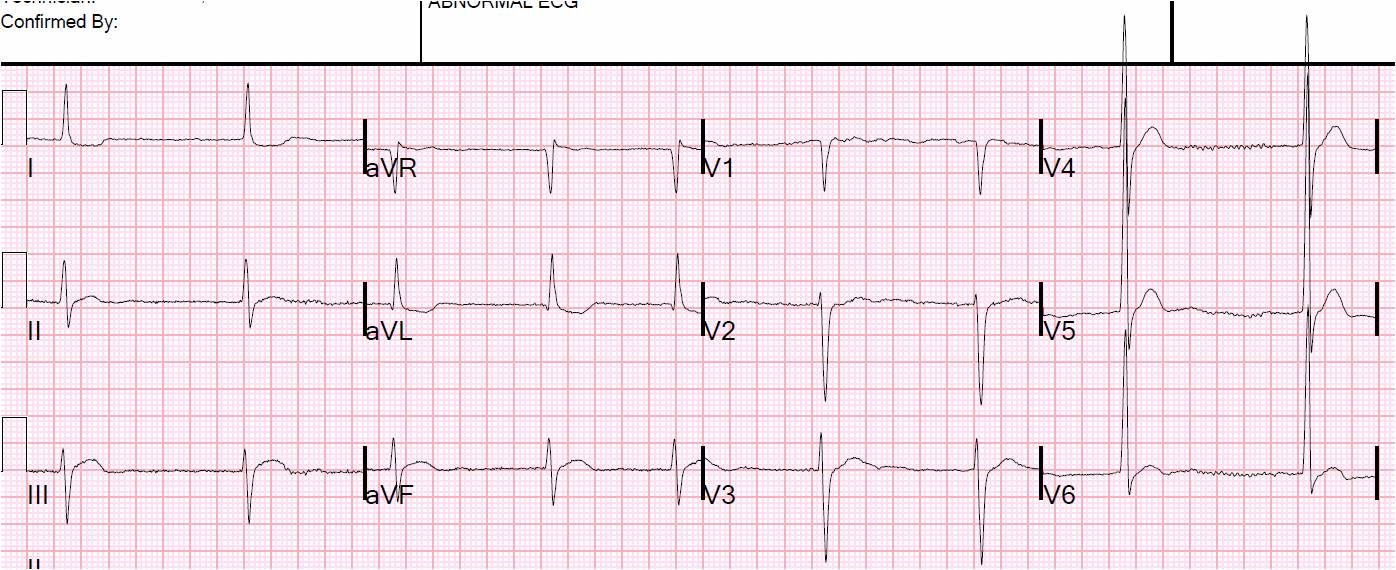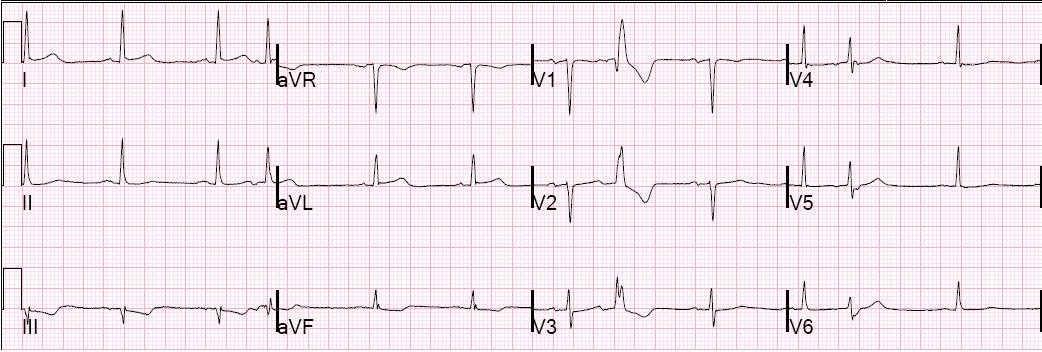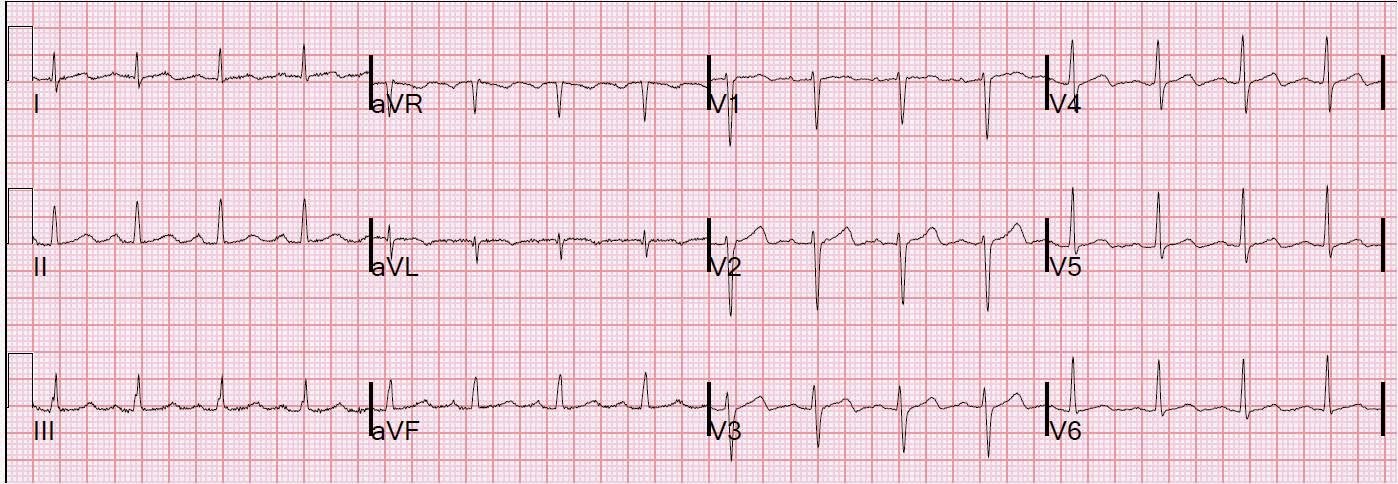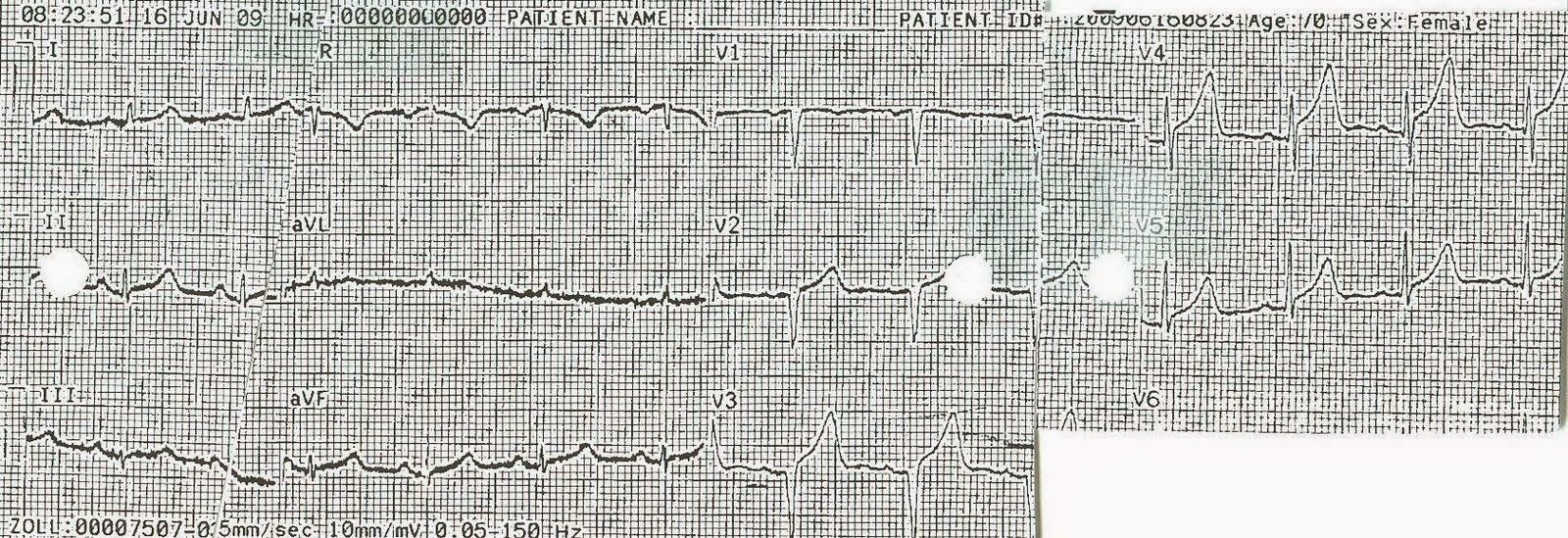This 82 year old presents with atypical chest pain:
 |
| There is slow atrial fibrillation and a slightly wide QRS (109 ms), with high voltage in precordial leads (LVH). There is ST elevation in II, III, and aVF, with reciprocal ST depression in I and aVL. |
There is one very important feature of the ECG I have not mentioned. What is it? What is the diagnosis? See below.
The QT interval is extremely short (QTc = 323 ms). That, along with the strange scooping of the ST depression and domed shape of the ST elevation, as well as the atrial fibrillation, should alert to possible Dig effect rather than STEMI. Indeed, she turned out to be on Digoxin.
Diagnosis: Dig effect. There was no STEMI. STEMI would have a longer QTc.




what does coving mean
It means upwardly oriented convexity.